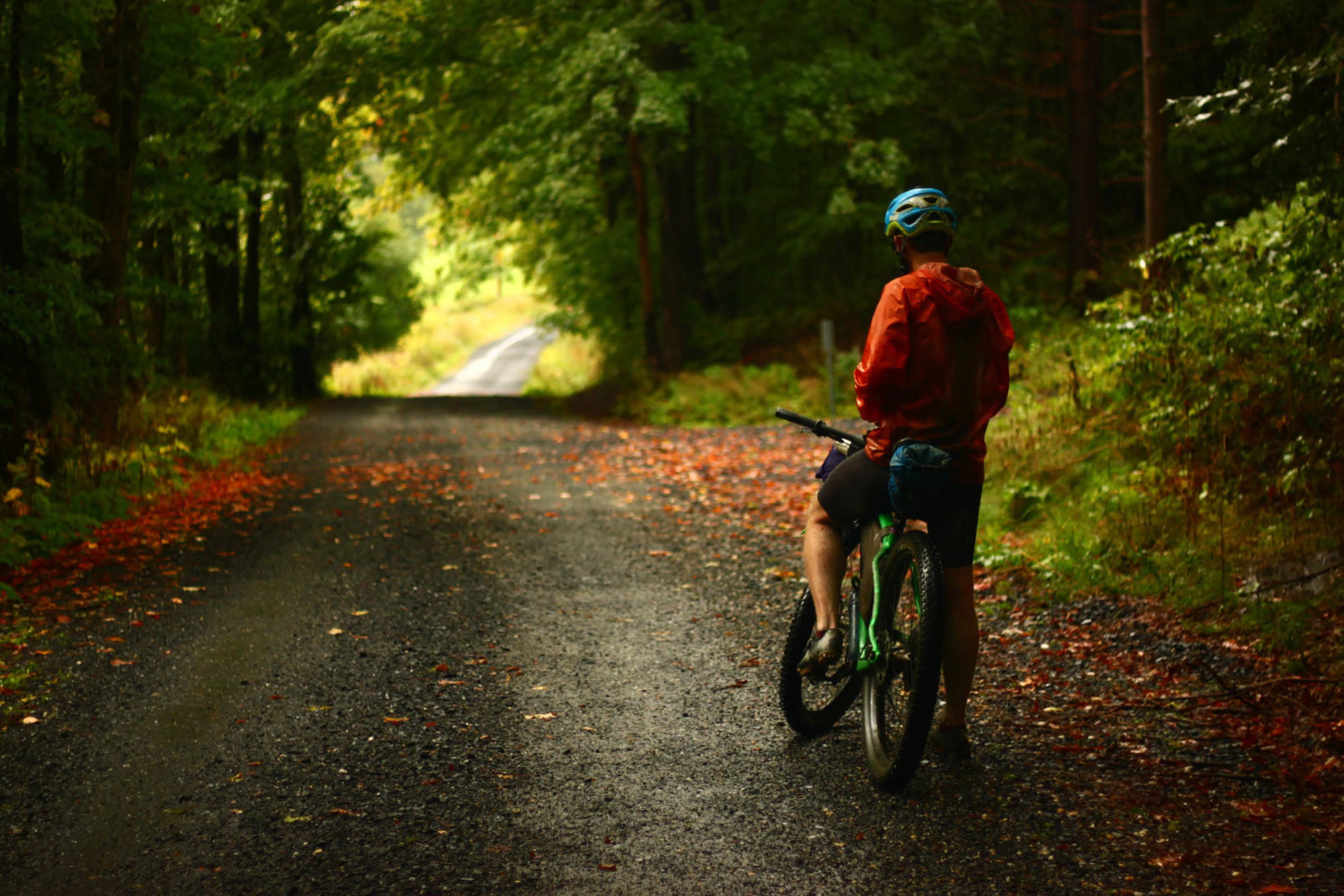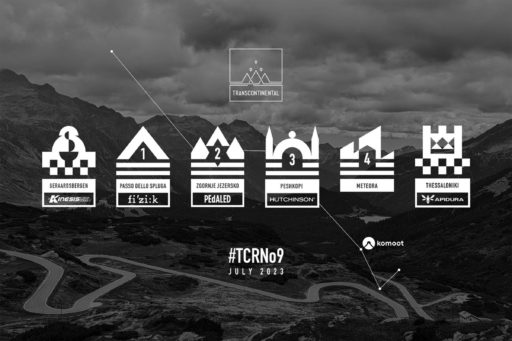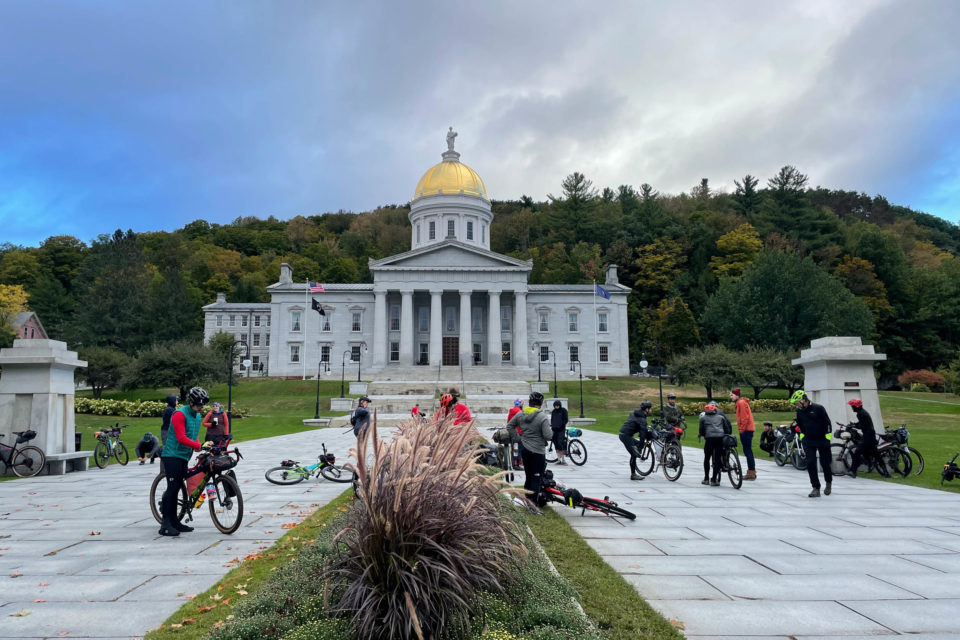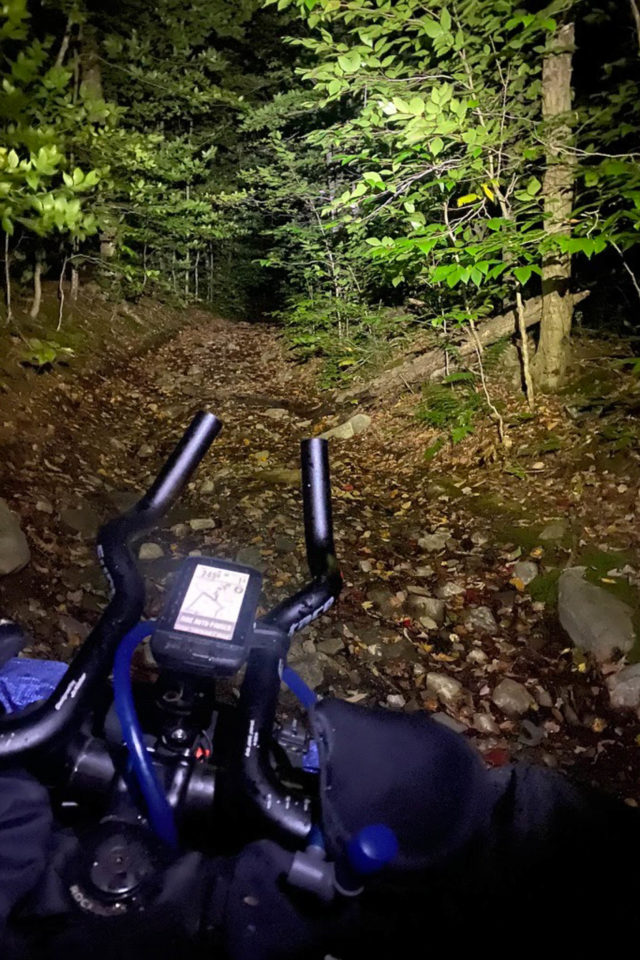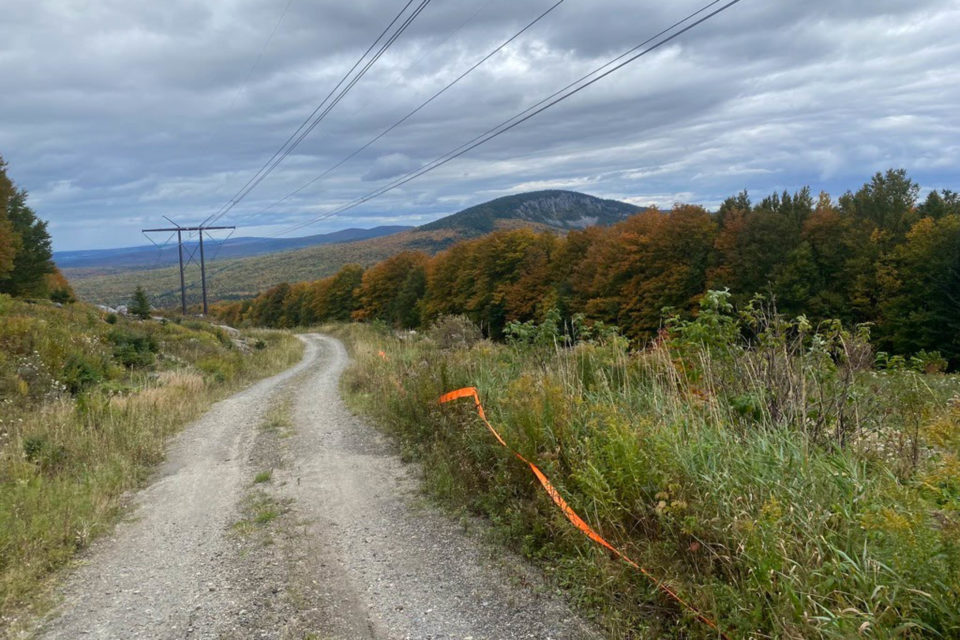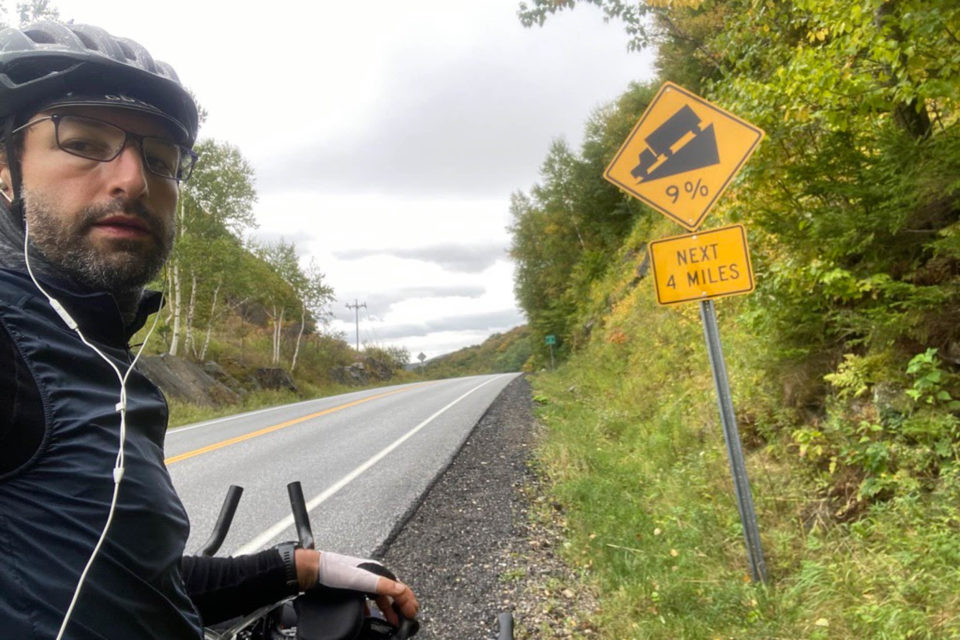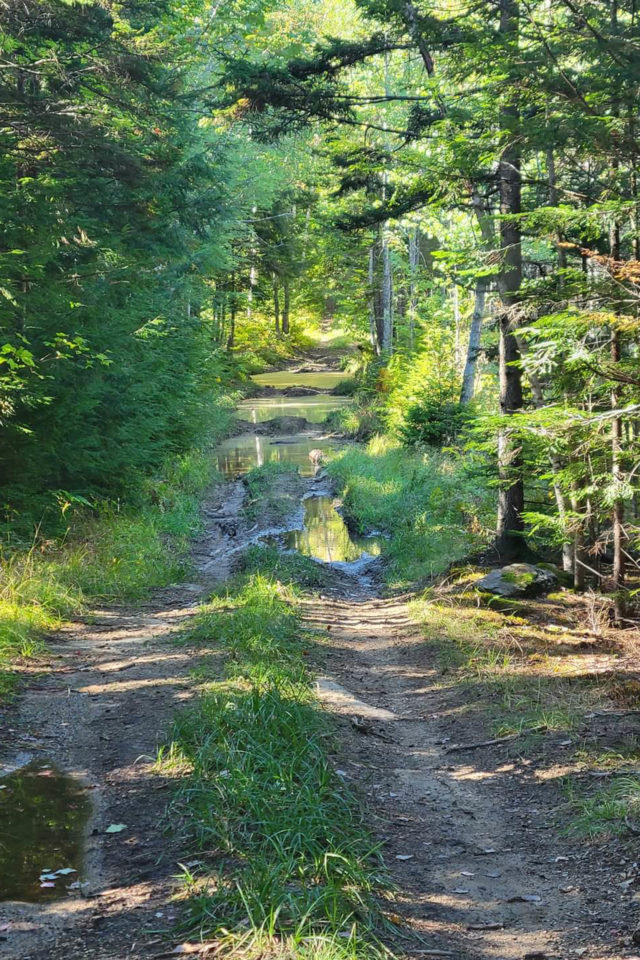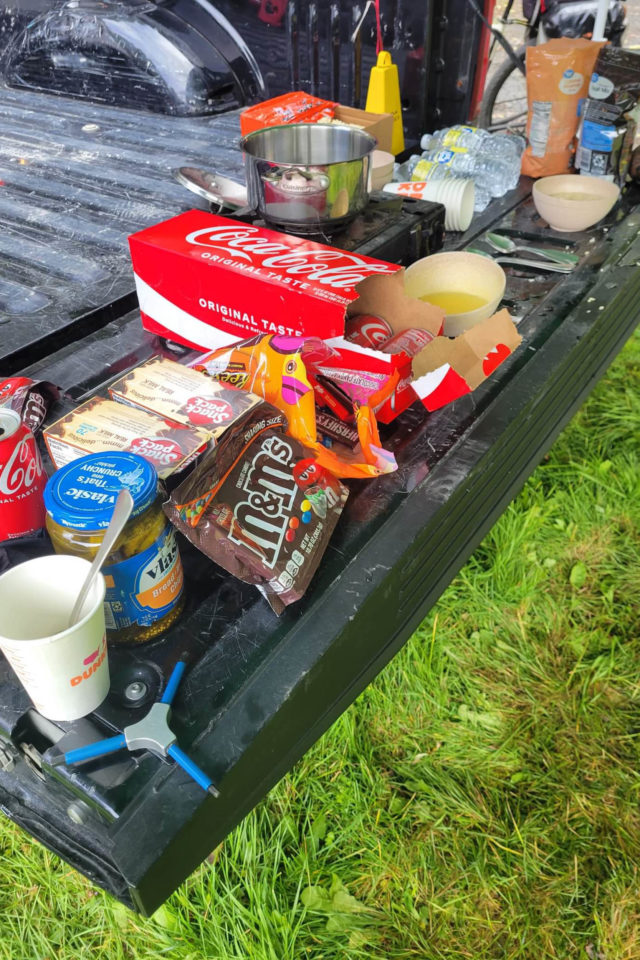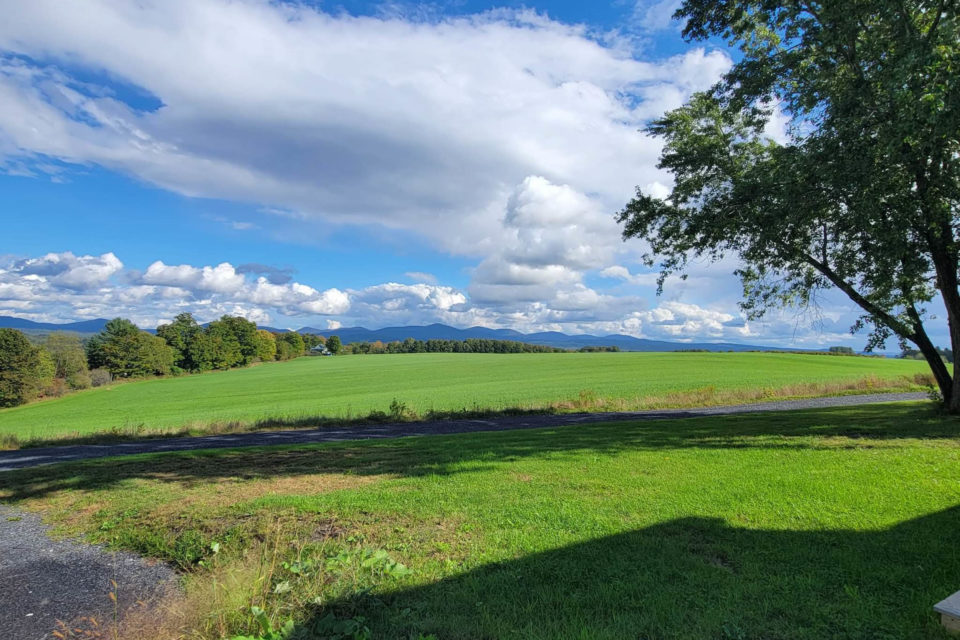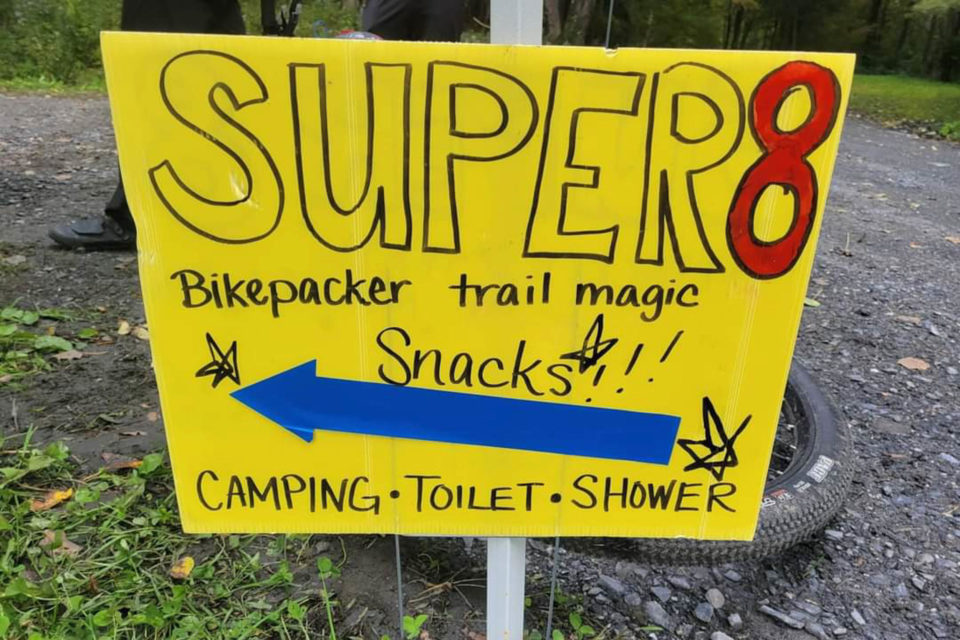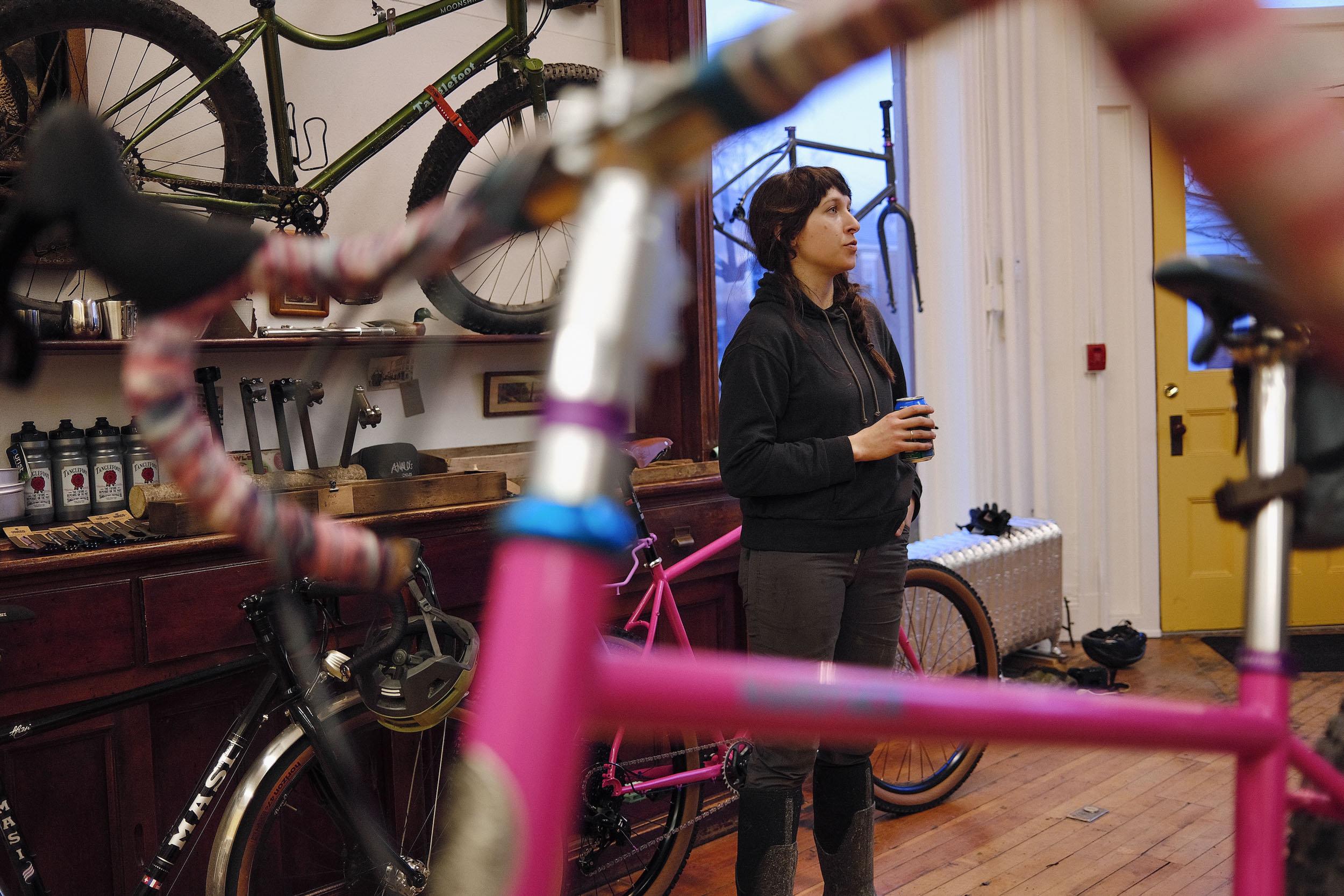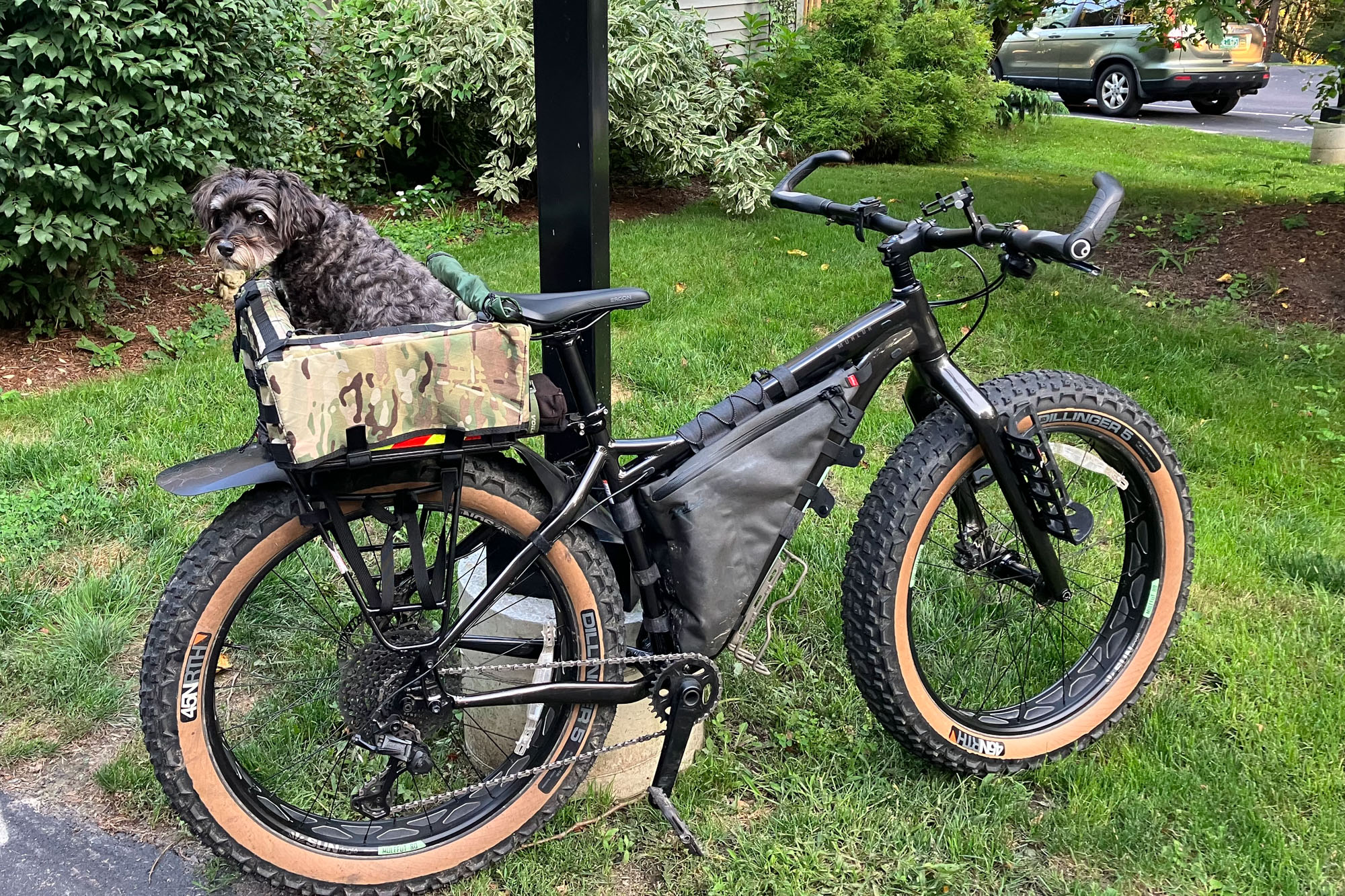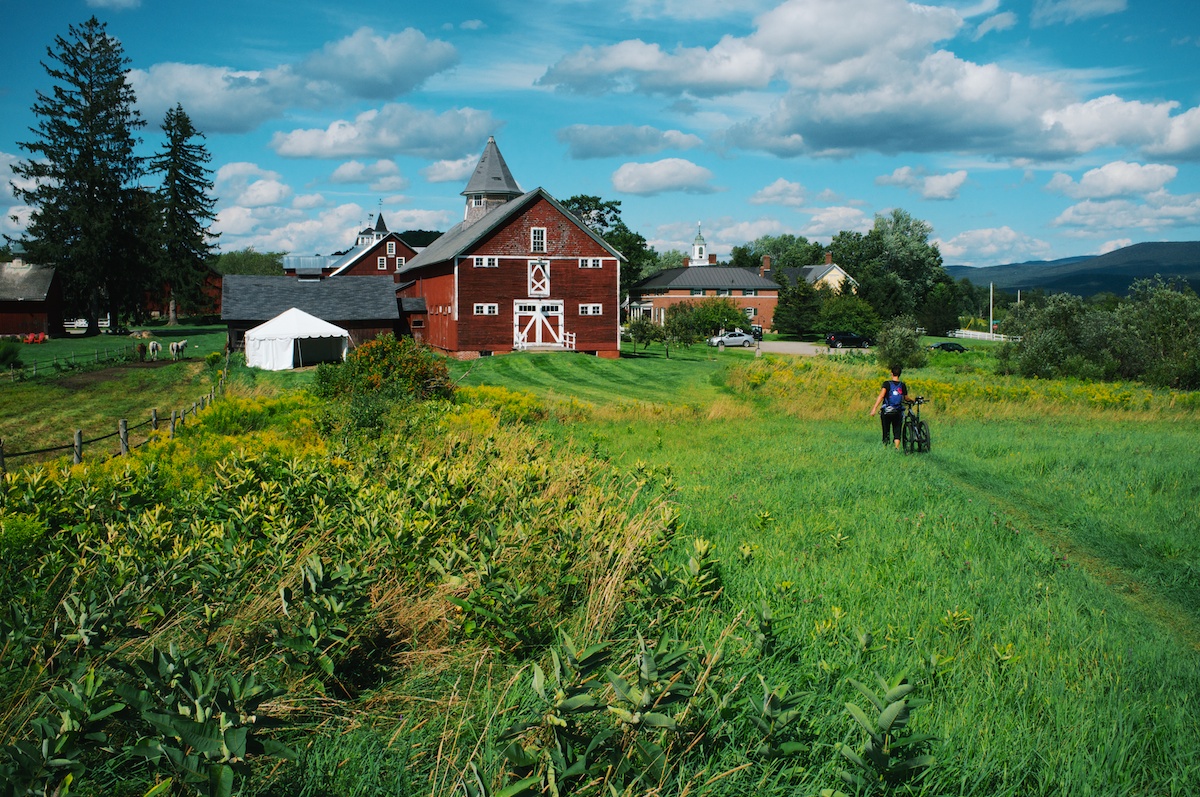Nearly 40 riders showed up for the fifth annual Vermont Super 8 event in September, with plans to tackle one of three route options ranging from 280 to 655 miles. We reached out to the Director of Vermont Bikepackers, Daniel Jordan, for a detailed recap of how the event played out…
Words by Daniel Jordan (@vermontbikepackers), photos by Tatianna Wawrzynski, Daniel Jordan, Adin Maynard, and Devan Pensinger
At 11 p.m. on day one of the Vermont Super 8 this year, four hours after sunset, most riders were still putting in miles.
The day had started soggy, but the cold front eventually treated bikepackers to an uncommon Vermont scene: a brisk, clear, and nearly moonless night full of stars. The best night sky view would have gone to riders in the north as they made their way through the remote Victory and Nulhegan Basins, deep into remotely populated areas with wide views, an exception to the ubiquitous green tunnel.
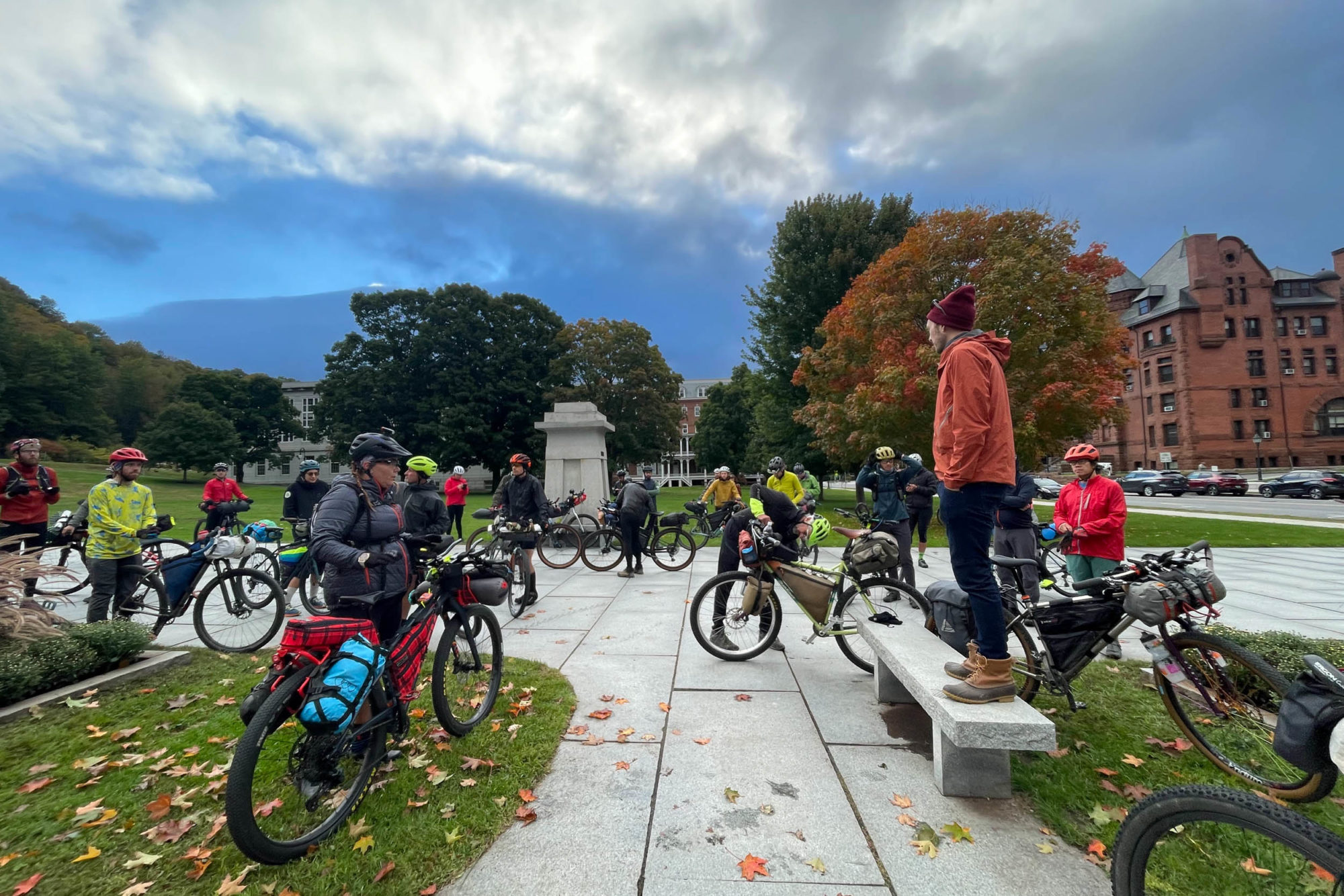
That most riders kept pedaling into the night is a testament to the experience of the field this year. Of the 37 riders who lined up, at least 15 had previously taken on either the 655-mile Full 8 or one of its subsections (375-mile south lobe or 280-mile north lobe). There were a handful of three- and four-time veterans as well, and many riders with other grand departs under their belts. Overall, this year’s field was very seasoned. But, experience and preparation only go so far on a New England multi-day ride through intermittent rain.
Three Rides that Ended Too Soon
As starry night one deepened, first-time Super 8 rider Ryan Sarka (NY) found himself dealing with seized pawls and a rear hub that would not engage. Around 3 a.m., after some troubleshooting in the frigid dark in Island Pond, he began the four-hour walk to his extraction point.
Tennille Irish (NH) had prepared for the north lobe with a recon ride this summer of nearly the full 280-mile section. She began the grand depart by crushing her first day at FKT pace and continued through the night with strong legs and good spirits. Then, around 4 a.m., she slipped on a wood bridge and sheared off her rear derailleur at a very remote section near the Canadian border. After hiking to pavement, she caught a ride with a friendly stranger to a restaurant, where she warmed by the fire and began to figure out extraction.
But this year’s adversity blue ribbon goes to north lobe rider Kim Tran (MA). Kim is a longtime backpacker and cyclist, but only began bikepacking this year. She met fellow north lobe rider Tina Stone (CT) on day two, and the two spent most of day three yo-yoing thanks to their compatible paces. As the finish grew closer, so did the bad weather. Kim suffered a sidewall tear at the top of Buffalo Mountain Road, only 15 miles or so from the end, which took about an hour to fix. In that time, the storm rolled in with driving rain. Kim faced the final bit of soppy singletrack solo and, not five miles from the end, slipped on a bridge in the rain and suffered a ride-ending crash. She got in touch with Tina, who had just recently finished. Tina extracted Kim, loaded up her gear, and took her to the ER, where it was confirmed that Kim had broken her collarbone.
In communicating with me afterward, Kim stressed that she had been much more careful on the wet wood bridges and rooty trails up until that point – having made it through more than three days of wet riding – and feels she knew she was taking a risk riding that one bridge, which was hard to resist because it was so close to the end. Impressively, she expressed nothing but gratitude for her ride and gratitude to Tina. A few weeks after her crash, Kim emailed her letter of intent to ride in the Grand Depart in 2023, this time for the Full 8.
Three Women’s FKTs
This year saw its share of triumphs as well, especially in the women’s categories, where three riders each set new FKTs for the three available mileage options. Tatianna Wawrzynski (NH) was back this year to settle the score with the south lobe, and, as it turns out, to set the overall women’s FKT at right around seven days, shaving over a day off the prior record set by Brittni Gorman in 2020. You can read more about Tatianna’s epic ride in a write-up published by The Town Bicycle.
Vermont local and experienced bikepacker Devan Pensinger rode straight through the night to finish the 280-mile north lobe in 1 day 17 hours, setting the new women’s FKT for that section of the course that comes within a few miles of her home in the Northeast Kingdom.
Then, one week after the start of the GD, gravel racer Paige Redman (AZ) lined up to take on the Full 8 and challenge the FKT that Tatianna had only just set. Paige set a blazing pace through the south and chopped the women’s FKT of the 380-mile section down from 5 days to 2 days and 16 hours. Upon reaching the 8’s central node in Montpelier, she called off the rest of her ride – the Arizonian couldn’t get dry enough, no thanks to the soggy conditions.
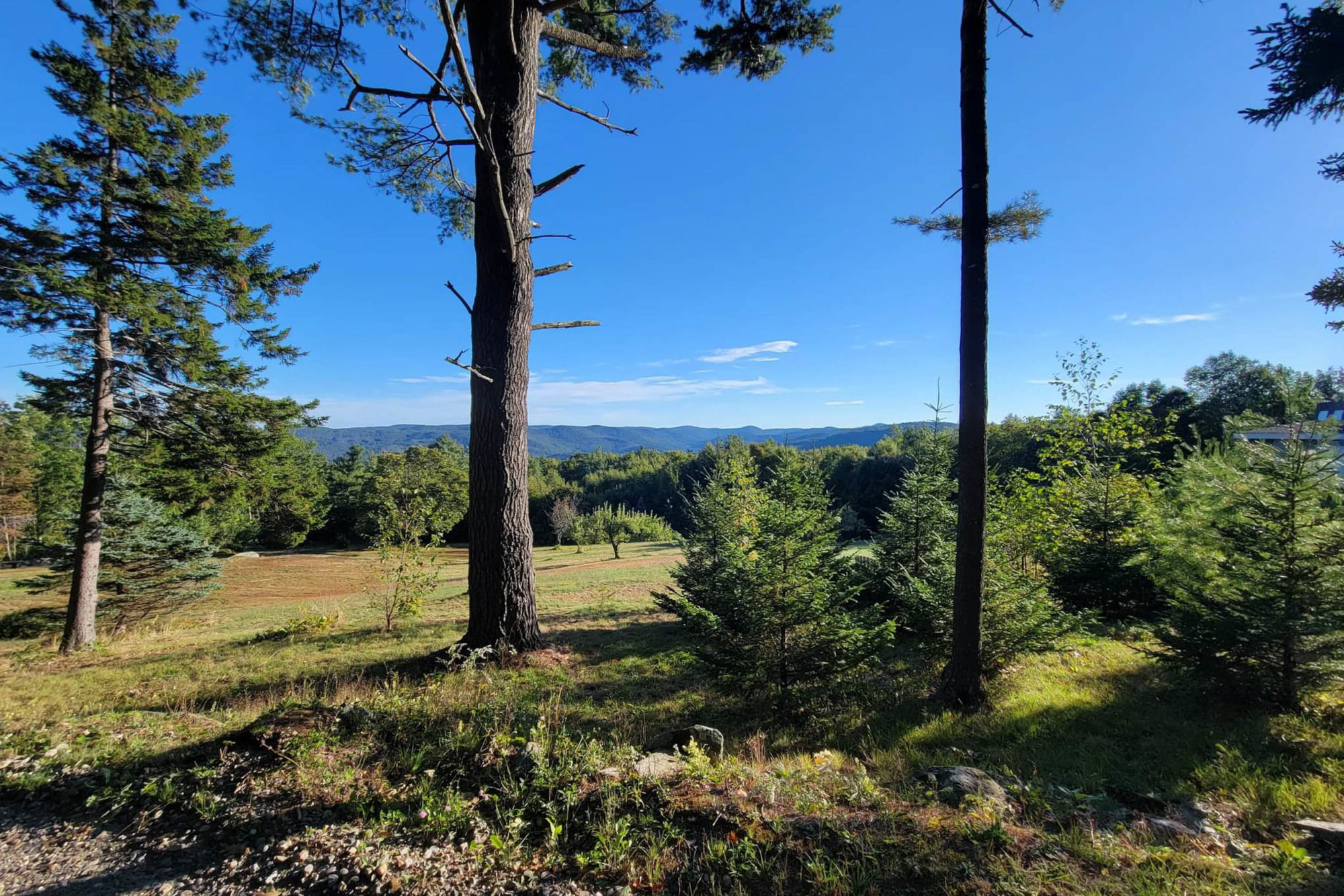
Parting Thoughts
Unfortunately, I can’t share all rider’s stories in this recap, but if you’re interested hear more from riders of this year and years past, visit the Vermont Bikepackers website, which includes links to ride reports.
As the Super 8 continues to find its place in Vermont – a state of only 650,000, a smaller population than many U.S. cities – the grand depart challenges the notions of route permanence, carrying capacity, and the so-called “self-supported” aspect of bikepacking.
The route has seen many changes since its inception, responding to developments out of the control of the bikepacking community. Since 2019, we’ve strived to keep the spirit of the route alive with each edition and to make only small revisions each year. Notably, the north lobe this year was 15 miles longer, but the additional mileage is due to three short stretches of difficult terrain having been modified – specifically, two necessary reroutes and one statewide trail reconstruction project. Vermont rights-of-way are not set in stone. In adding mileage, we try to keep the Super 8 “about as hard” with each revision. Due to the variety of terrain on the route, riders like to say that “every bike is the wrong bike.” We’re trying to keep it that way, for better or for worse.
Additionally, during conversations with state agencies and through various permitting processes, and in light of the growing number of gracious hosts along the route offering yard camping and trail magic to Super 8 riders (VT has a very low percentage of public land compared to most states in the western U.S., so we rely in part on yard camping), I’ve come to consider if the route itself should be open only during a specified season. Many of Vermont’s longer-running outdoor activities such as hunting/trapping and even mountain biking operate under time-bound access. Establishing a “bikepacking season” is probably overkill, but for the Super 8 itself and the various private hosts and permitted-use public lands that now comprise it, should the route be open only during a few weeks or months each year? Food for thought.
Finally, the self-supported aspect. Riders are nominally on their own for camping, resupply, and extraction if needed. The traditional narrative of outdoor sports in rural communities is that we’re doing a good thing by bringing tourism dollars to rural economies. It’s true that bikepackers drop big dollars at general stores as 500 calories per hour isn’t cheap! But another interpretation of what actually happens is that we’re unleashing soggy, sleep-deprived adventurers onto a string of rural communities that are otherwise going about their daily lives, and in some cases are struggling to do so. Occasionally, riders find themselves in need of help from passers by or even local authorities. Would it actually be more sustainable for event organizers to offer extraction services to riders, rather than just saying they’re totally on their own? See also this year’s Tour Divide, which reportedly required over a dozen search and rescue missions from agencies in Canada and Montana. We’re attempting big, badass rides, but should we be entitled to services intended for communities that we’re only visiting?
I raise these questions as food for thought for the bikepacking community, and more specifically for the community that rides in grand departs. We all want a sustainable version of our sport. So far, the reputation of the VT Super 8 relies on the graciousness and wherewithal of the riders who take it on, and their countless interactions with locals. So far, the good interactions seem to have outweighed the bad ones. I’d like this trend to continue. Every ride is a gift.
Related Content
Make sure to dig into these related articles for more info...
Please keep the conversation civil, constructive, and inclusive, or your comment will be removed.






